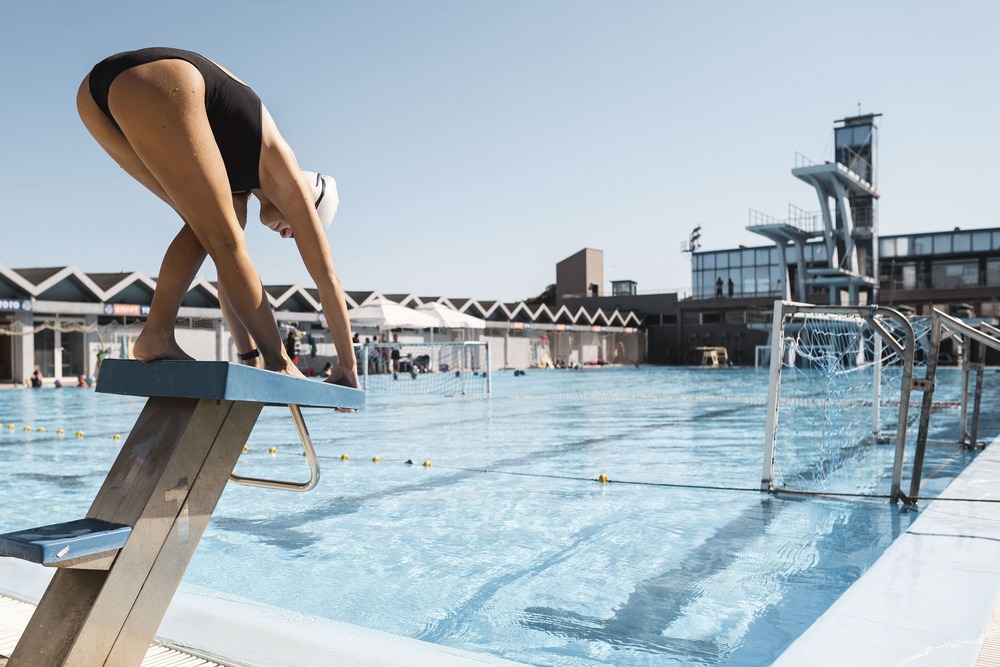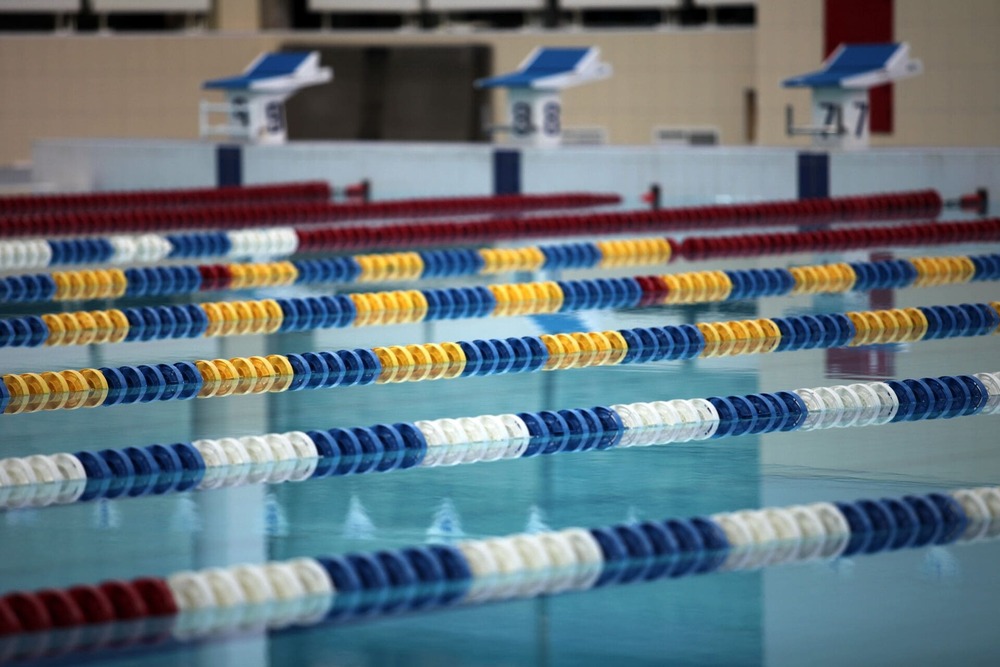At the center of swimming pool safety equipmentis one question: how to ensure swimming pools remain sources of joy, recreation, and rejuvenation by putting safety at the forefront.
As safety regulations tighten and public awareness grows, investing thoughtfully in swimming pool safety equipment goes beyond good practices and becomes a necessity for operating pools successfully.
As such, in this guide we explore the regulatory environment surrounding pool safety, the various risk factors across facility types and the safety solutions available today, from the most basic to the most advanced, including the emerging trends shaping the future of aquatic safety.
Dive deeper with the eBook
The regulatory backbone: standards defining safety today
Navigating safety equipment in swimming pools begins with understanding applicable standards that are specific to equipment.
On the one hand, there are a series of international benchmarks which offer detailed recommendations for the proper installation and upkeep of safety equipment. These include those set by ANSI/APSP, the American National Standards Institute/Association of Pool & Spa Professionals. On the other hand, facility managers must also remain well‑versed in local building codes and health regulations, which include specific requirements for aquatic facilities.
In the case of competition pools, these requirements must be incorporated on top of the rest of potential obligations by the relevant authority: from Olympic pool requirements, to synchronized swimming pool standards or high-diving pools.
An effort for compliance that is not just a safeguard against penalties, but an essential step for keeping swimmers secure and building reputation for an aquatic facility.
Swimming pool safety equipment: from the basic to the advanced
Essential elements for swimming pool safety
1. Barriers & fencing
Capable of preventing unsupervised falls, these elements represent the first line of defense in swimming pool safety. Because of this critical role, the market for safety covers and barriers continues to expand rapidly, ensuring aquatic facilities have a wide range of options available to match their needs and aesthetic.
2. Safety covers
These multifunctional shields not only safeguard against accidental falls (with integrated anti-slip surfaces) but also boost pool hygiene, reduce heat loss, minimize evaporation, and cut chemical usage.
3. Safety signage & markers
Clear signage, such as depth indicators and lane guidelines, is crucial for safety in pools. Additionally, in the specific case of sports pools, a number of elements must be added, including backstroke flags and starting blocks, among other specific gear that is mandatory.
4. Rescue tools
Life rings, shepherd’s crooks, reach poles, and emergency blankets are all key for ensuring swift rescue efforts. Often overlooked in planning stages, their incorporation mustn’t be overlooked.
5. Non-slip surfaces
Particularly around high‑traffic or wet areas, non‑slip flooring is in charge of reducing slip‑and‑fall injuries, a common poolside hazard.

Advanced & smart safety equipment
1. Connected automation & monitoring
Advanced swimming pool safety involves integrating safety devices into platforms like Fluidra Connect or Lynxight.
Connected pool technology solutions make it possible for operators to supervise and control multiple pool systems and parameters remotely. In the case of security elements in particular, these are capable of delivering real‑time monitoring and alerts, which can become crucial to support oversight by human staff.
2. Automated covers & lighting
Adequate lighting, especially during low visibility hours, can be crucial to avoid certain accidents in pools. Advanced aquatic facilities are implementing smart systems that automatically open or close pool covers (based on weather or time), thus ensuring adequate lighting.
3. Predictive maintenance
By analyzing historical and live data, connected systems can flag when barriers or safety equipment need servicing, thus reducing unexpected failures and the potential accidents that may ensue.
Emerging trends in pool safety equipment
1. Data-driven safety
A number of technological advances are opening the door to new standards in pool safety.
Such is the case of digital twin technology, which involves creating virtual replicas of pools to let operators model certain scenarios and anticipate problems. As such, this option is emerging as a key ally in safety‑related scenarios, allowing pools to plan preventative maintenance and optimize design decisions for safety.
Drowning-prevention technologies are also becoming increasingly adopted for their enhanced support to human safety personnel.
2. Safety that is environmentally friendly
Pool facilities are putting sustainability at the forefront to meet increasingly strict regulations and public scrutiny and awareness. In this context, safety measures such as thermal covers are key for protecting pool areas, while also helping conserve water and energy.
3. User-friendly safety equipment
From low‑effort covers to barrier modules, implementing safety tools that are intuitive and user friendly is also becoming a key trend, as they boost adoption and ensure proper and consistent use.
Tips on how to pick the right swimming pool safety equipment for each project
- Know the facility’s risk profile: every aquatic environment comes with a unique risk profile, marked by diverse usage patterns, demographics, and environmental conditions. While each pool’s case must be studied separately, the following patterns can be a useful starting point for understanding risk profiles:
- Commercial pools tend to experience heavy and diverse usage, thus requiring sturdy, scalable safety systems.
- Hotels and resorts must prioritize 24/7 protection, including secure night-time access and anti-intrusion measures.
- Sports and competition facilities demand functionality that meets strict competitive standards.
- Water parks involve varying depths and attractions, thus requiring versatile and multi‑layered safety strategies.
- Spas and wellness centers combine higher temperatures and relaxed states, increasing slip and accident risks.
- Ensure compliance with relevant regulations: each project will need to consider international and local guidelines related to safety in order to avoid penalties and shut-downs.
- Pick scalable solutions: particularly important for commercial or high-use settings, as scalability opens the door to further durability and low maintenance.
- Prioritize usability: as mentioned above, easy-to-use safety equipment ensures consistent and correct use, and should thus be prioritized.
- Weigh total cost of ownership: as a general rule, smart, durable gear has higher upfront costs but tends to have a positive impact later on, providing savings in maintenance, energy, and chemicals in the medium and long term.
- Plan for tech integration: where possible, choose safety devices that can be monitored or automated for operational peace of mind.

Swimming pool safety equipment: evolving towards safer facilities
Effective swimming pool safety equipment transforms aquatic facilities into secure, and compliant spaces that make a difference in terms of bather security and brand reputation.
From core barriers and covers to advanced smart systems and predictive technologies, swimming pool safety equipment ensures investments translate into peace of mind for operators and users alike.
At the same time, swimming pool safety equipment is evolving to provide swimmer security like never before. Such is the case of technologies like Lynxight, which harnesses AI to transform pool cameras into intelligent lifeguards.
An example of Fluidra’s commitment to taking pool security to the next level by offering a wide array of pool safety products and connected solutions that help operators create truly safe aquatic environments.
FAQs about swimming pool safety equipment
What are pool safety equipment elements?
Pool safety equipment elements involve a broad range of components designed to protect bathers against specific risks in aquatic facilities. The most significant pool safety equipment elements include:
- Barriers & fencing
- Safety covers
- Safety signage & markers
- Rescue tools
- Non-slip surfaces
Additionally, a series of tech-based innovations are emerging and taking pool security to the next level and setting a new standard for swimming pool safety.
What safety equipment should be present at a swimming pool to ensure safety?
As seen above in this article, the choice of pool safety equipment should be based on each project’s needs and requirements, as the security elements needed in a pool can vary depending on the type of facility and usage patterns.
However, the elements that are generally considered as “safety musts” include barriers & fencing, safety covers, safety signage & markers, rescue tools and non-slip surfaces.
